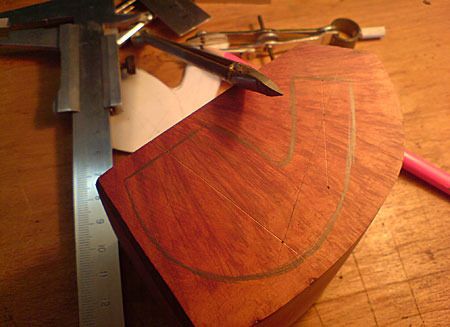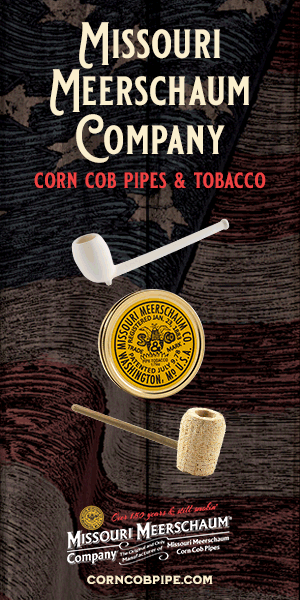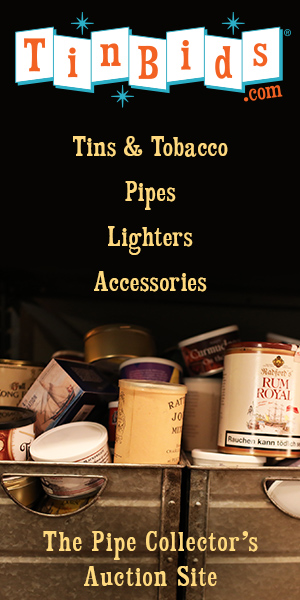Reading another thread about useless and undiscerning idiots wasting their lives puffing away in their turds and other eyesores, has made me think about what constitutes a good pipe as a whole. As I was going through this tread, I thought it was lacking in communication skills and market strategies, but the point was taken anyway. It is true that most of the Instagram,Facebook, YouTube, etc., pipe makers lack the skills needed to make a well balanced pipe that, not only will smoke well, but that it is beautiful too and nice to look at. Having said that, I shall attempt to jot down a list of features and general qualities I am expected to find in a pipe, and give account for them:
1. Tapered bowls: there is a difference in between drilling a hole and engineering one. Pipe with straight bowls will waste your tobacco as your dottle widen out at the bottom, so avoid tobacco wasters.
2. No fillings: whether I buy a cheap or a top of the range pipe (let us call it a "first"), I always expect to see what I am buying. I don't mind basket pipes or seconds with a few sandpits and imperfections if they smoke well and are visible to the naked eye. Hidden sandpits, on the other hand, might burn your pipe right where the briar thins out, so I think it is critical to see what you buy.
3. No bowl pretreatment: as above, hiding the wood to the naked eye is not a good strategy and those pretreated pipes do still need breaking in + they don't smoke any better than the non treated ones. Also, over the years I found the coating inside of the bowl gives your first and second smoke a somewhat artificial taste.
4. Old briars smoke best: it is hard to find well aged briars nowadays, but if the wood is way too young it will give your smoke a nasty sour taste.
5. Well machined and crafted: when buying a new pipe, don't let your eyes fool you. Beautiful though it might be, a pipe with a non centred air hole, for instance, is a pipe which is not worth having. Examine the bowl carefully and see if the drill has gone a little bit too far damaging the opposite wall, be aware of any cracks in the shaft that might be hidden with the metal ring most pipe makers enhance their pipes with or pay special attention to the air hole making sure it has not been placed well above the bottom (this will produce unwanted condensation too).
6. No big holes: a bowl has to be just the right size. When the bowl is too big your tobacco won't smoke evenly and you will most likely end up wasting most part of it due to unwanted condensation.
7. Straight grains: this is not only a good feature to feast your eyes on. When the grain runs across straight from top to bottom, you ensure the density of the wood will be the same through and through.
8. Hand fitting: a pipe has to fit nicely in your hand. I have come across many pipes I did not buy in the end just because of the fact they did not sit well in my hands.
9. Excessive weight: if a pipe is too heavy, you won't be able to hold it in your mouth for long periods of time without getting tired. I am a little bit of a clencher, so this is a must.
10. No coloured or painted pipes: if you like rusticated pipes, always try to look for natural finishes, that is, waxed but not painted. This way you can ensure you get what you paid for + there is no need to hide the beauty of the grain from the naked eye. Whenever you come across one of these pipes, ask yourself what the pipe maker is trying to hide.

1. Tapered bowls: there is a difference in between drilling a hole and engineering one. Pipe with straight bowls will waste your tobacco as your dottle widen out at the bottom, so avoid tobacco wasters.
2. No fillings: whether I buy a cheap or a top of the range pipe (let us call it a "first"), I always expect to see what I am buying. I don't mind basket pipes or seconds with a few sandpits and imperfections if they smoke well and are visible to the naked eye. Hidden sandpits, on the other hand, might burn your pipe right where the briar thins out, so I think it is critical to see what you buy.
3. No bowl pretreatment: as above, hiding the wood to the naked eye is not a good strategy and those pretreated pipes do still need breaking in + they don't smoke any better than the non treated ones. Also, over the years I found the coating inside of the bowl gives your first and second smoke a somewhat artificial taste.
4. Old briars smoke best: it is hard to find well aged briars nowadays, but if the wood is way too young it will give your smoke a nasty sour taste.
5. Well machined and crafted: when buying a new pipe, don't let your eyes fool you. Beautiful though it might be, a pipe with a non centred air hole, for instance, is a pipe which is not worth having. Examine the bowl carefully and see if the drill has gone a little bit too far damaging the opposite wall, be aware of any cracks in the shaft that might be hidden with the metal ring most pipe makers enhance their pipes with or pay special attention to the air hole making sure it has not been placed well above the bottom (this will produce unwanted condensation too).
6. No big holes: a bowl has to be just the right size. When the bowl is too big your tobacco won't smoke evenly and you will most likely end up wasting most part of it due to unwanted condensation.
7. Straight grains: this is not only a good feature to feast your eyes on. When the grain runs across straight from top to bottom, you ensure the density of the wood will be the same through and through.
8. Hand fitting: a pipe has to fit nicely in your hand. I have come across many pipes I did not buy in the end just because of the fact they did not sit well in my hands.
9. Excessive weight: if a pipe is too heavy, you won't be able to hold it in your mouth for long periods of time without getting tired. I am a little bit of a clencher, so this is a must.
10. No coloured or painted pipes: if you like rusticated pipes, always try to look for natural finishes, that is, waxed but not painted. This way you can ensure you get what you paid for + there is no need to hide the beauty of the grain from the naked eye. Whenever you come across one of these pipes, ask yourself what the pipe maker is trying to hide.








